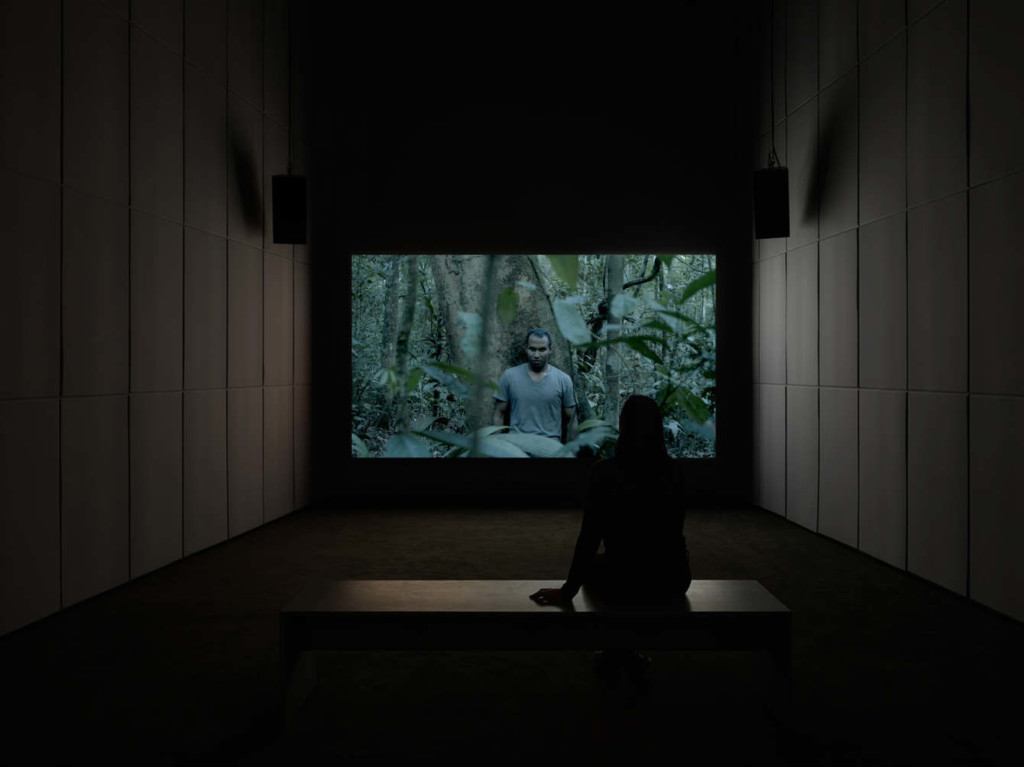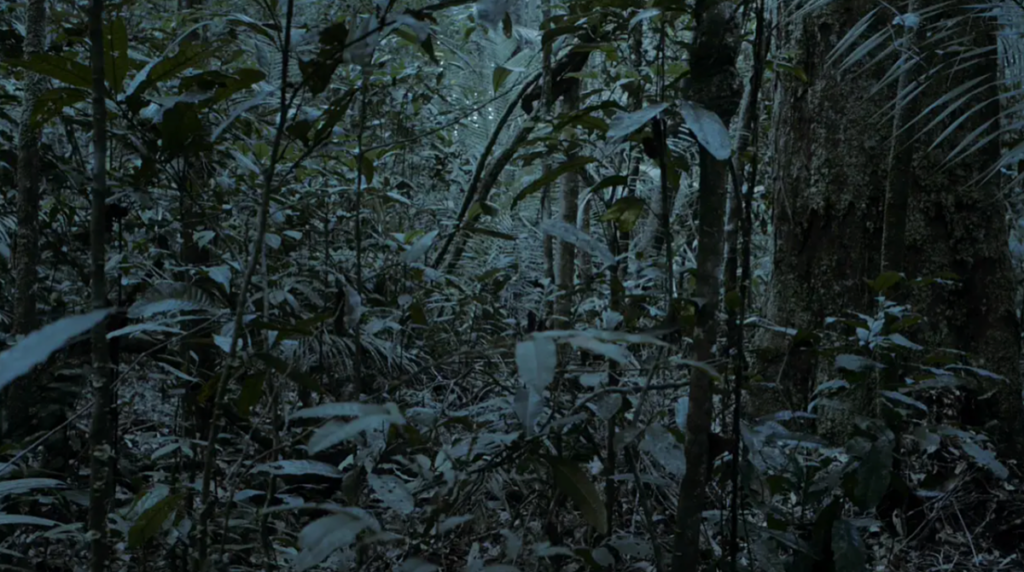- No products in the cart.
Share:
In collaboration with the Galeria Millan of Sao Paulo, Galeria Senda will present Capitão do Mato (2016) a video art work by Brazilian artist Regina Parra. The piece will be screened at the gallery from November 10 to November 30, as part of the 2020 City Screen program of Loop Festival.
Filmed in the Amazon rainforest, Capitão do Mato by Regina Parra (São Paulo, 1984) takes its title from the popular name of a bird that lives in South America. Known for its high-pitched, shrill cries that reveal the presence of strangers in the forest, the bird used to guide settlers on their silent walk through the woods in search of escaped slaves, in the late 19th century. In Capitão do Mato the camera becomes a gaze, both violent and poetic, that scans the forest in search of images and sounds from the past, trapped in the natural landscape of the contemporary Amazon.
From a research on the relationship between oppression and insubordination, the artist Regina Parra (São Paulo, 1984) has been elaborating since 2005, paintings, videos, performances and installations that examine and worship resistance. Born in São Paulo in 1984, the artist holds a Bachelor’s degree in Fine Arts under the guidance of Paulo Pasta and a Master’s in Art History under the guidance of Lisette Lagnado. Initially, though, she graduated in Theater under the guidance of Antunes Filho. In the Theater field, she would work as a director of actors until 2003, and the experience in this area brought to her production a special view on the many vectors of meaning that can simultaneously cross compositions between human bodies, objects and spaces. In 2008, Parra was part of a group that ended up being known as “2000e8”, formed by eight artists from São Paulo who participated in a curatorship by Paulo Pasta and who had in common the desire to investigate contemporary painting.Since then, her research has increasingly focused on signaling the colonial heritage, finding, displacing and twisting active vestiges of the injustices of patriarchy, colonialism and capitalism.
Since then, her research has increasingly focused on signaling the colonial heritage, finding, displacing and twisting active vestiges of the injustices of patriarchy, colonialism and capitalism.


Single-channel video, color, sound, 5 min.
Courtesy of the artist and Galeria Senda
























































































